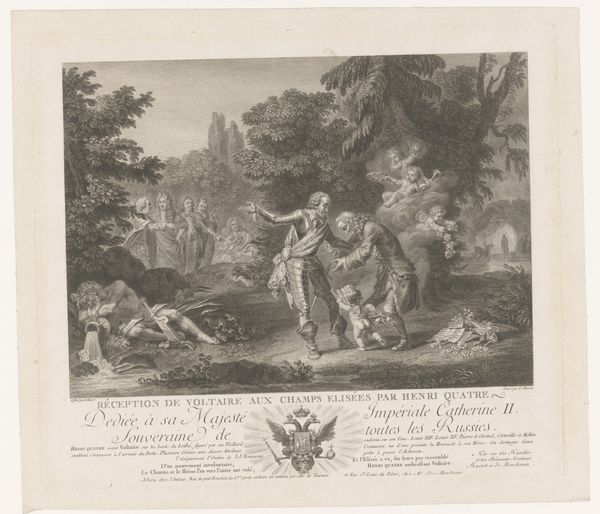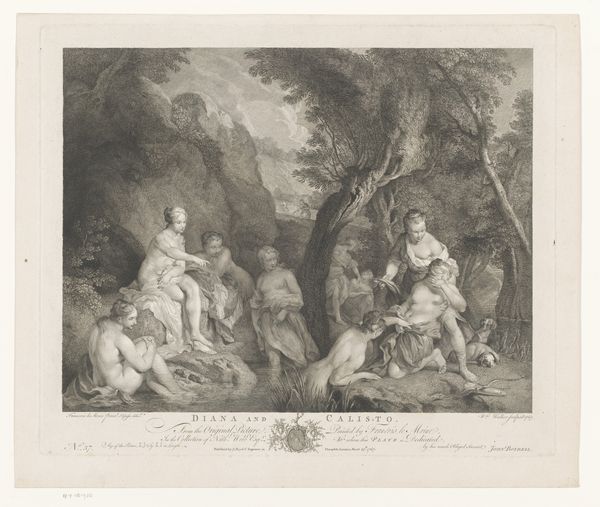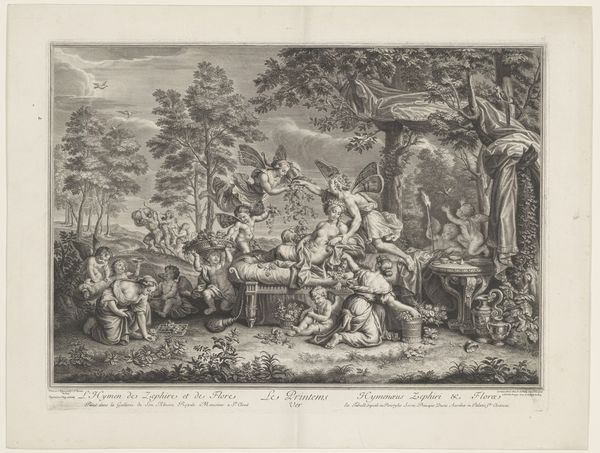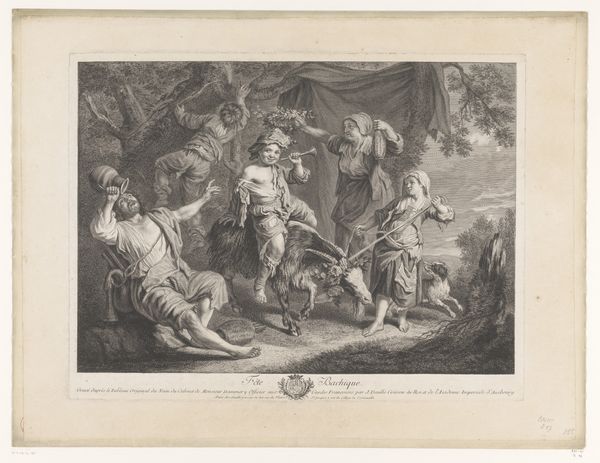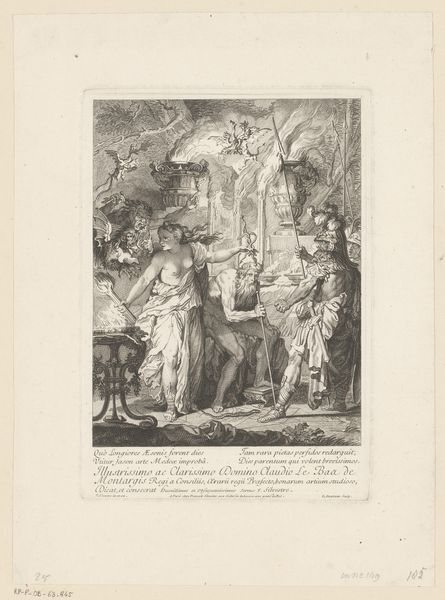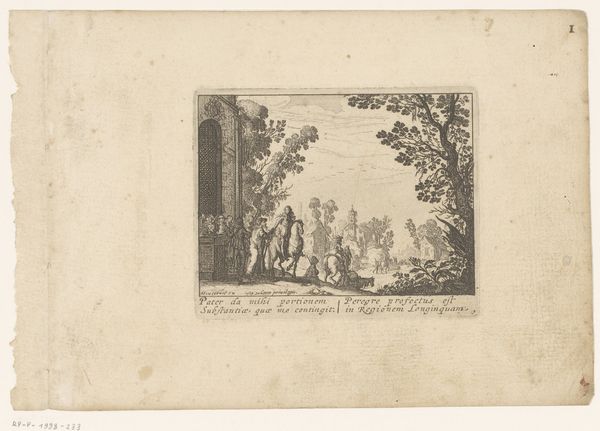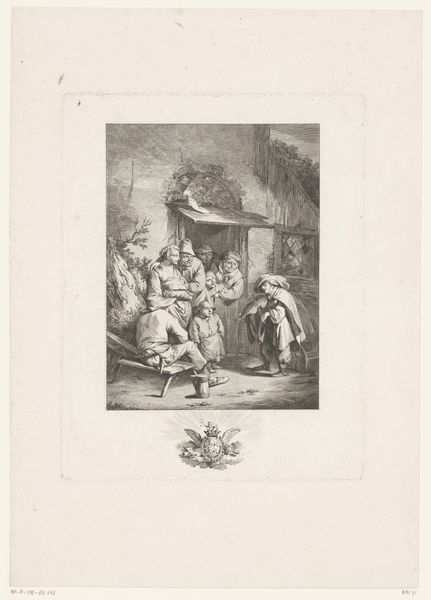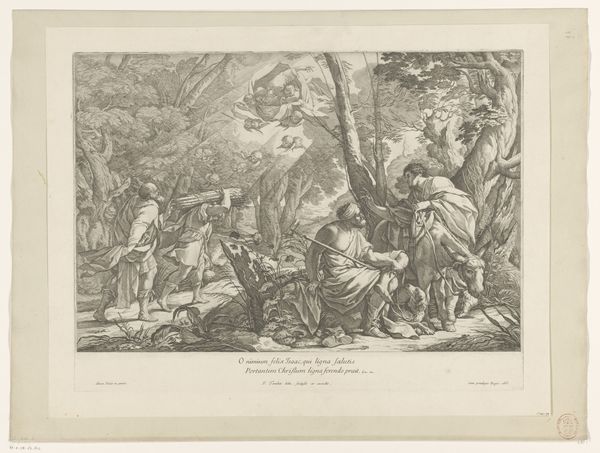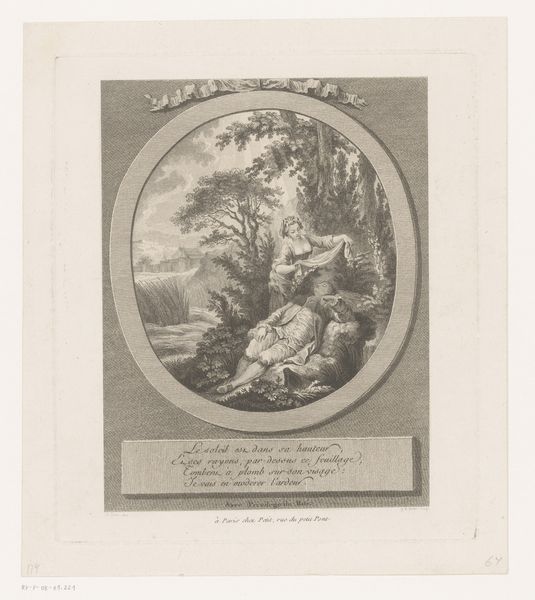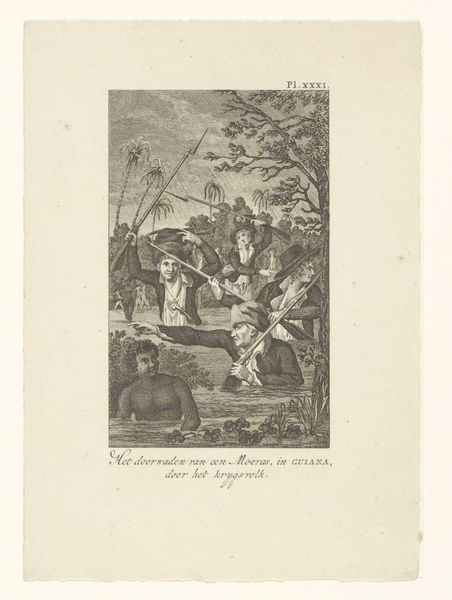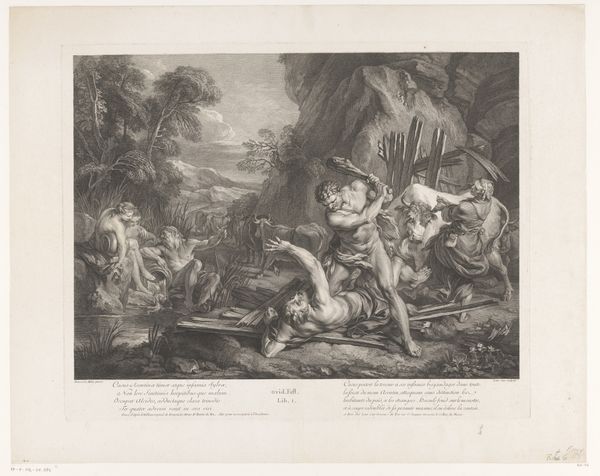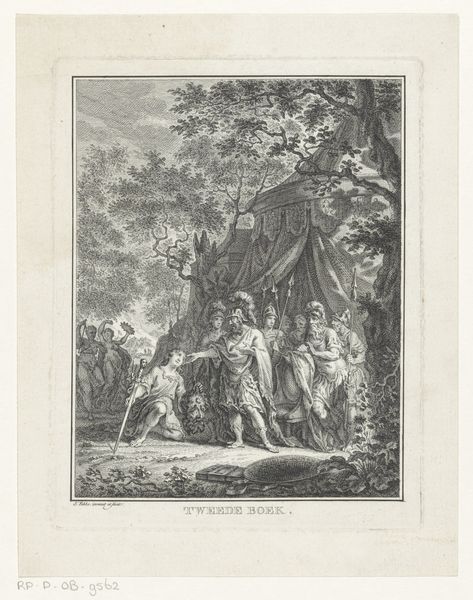
Dimensions: height 297 mm, width 353 mm
Copyright: Rijks Museum: Open Domain
Curator: Oh, this engraving exudes a certain melancholic air, doesn't it? "Abraham verdrijft Hagar en Ismaël"—Abraham expelling Hagar and Ishmael—dating from around 1739 to 1786. It’s by Jean Jacques Le Veau. Look at the delicate linework; it's quite stunning, a beautiful example of baroque artistry currently residing at the Rijksmuseum. Editor: Melancholic is right. It feels heavy, doesn't it? The crisp detail highlights the very palpable emotions swirling about this familial crisis. I can almost hear the wails. What symbolism strikes you first? Curator: The obvious is Abraham’s averted gaze – he physically turns away from Hagar and Ishmael as he follows God's command, as though absolving himself from the situation, a clear case of faith conflicting with feeling, perhaps. Then, Sarah observing from the window – she’s confined, almost like a stage manager orchestrating the expulsion. Her position and hidden vantage is fascinating. Editor: Precisely. And note the children. They're innocents being cast into the wilderness—untamed nature encroaching in the corner mirroring their own precarious fate. This evokes enduring motifs of exile and abandonment, right? I mean, even the little dog seems distressed; there is disruption in all directions. Curator: You know, that wilderness aspect, juxtaposed against the almost overly-refined, staged composition… it brings a powerful sense of unease, reflecting not only the immediate domestic drama but also this bigger picture of divine order clashing with raw human emotions, or with social order. It's like, civilization turning its back. Editor: Exactly. And the light seems almost strategically deployed to emphasize the figures' isolation, accentuating that awful divide. Curator: There's also this strange detachment that pervades the scene despite the subject matter. You’re absolutely right about that sharp contrast of light and dark and it pushes certain aspects into high relief. Everyone's caught within their specific role – the patriarch, the discarded mother, the outcast child – and Le Veau has etched them starkly into this narrative. Editor: An ending… or beginning. It speaks to the painful realities of legacy and displacement that continue to resonate across cultures and eras, perhaps, and it definitely resonates still today. The piece just hangs, pregnant with meaning. Curator: Beautifully put. These emotional resonances make engaging with artwork so incredibly potent. It makes you question yourself and societal implications.
Comments
No comments
Be the first to comment and join the conversation on the ultimate creative platform.
